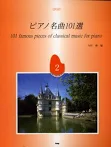Beethoven, Ludwig van : Sonate für Klavier Nr.14 "Sonata quasi una fantasia"(Mondscheinsonate) 1.Satz Adagio sostenuto
Work Overview
Genre:sonata
Total Playing Time:6 min 30 sec
Copyright:Public Domain
Commentary (2)
Author : Maruyama, Yoko
Last Updated: March 5, 2019
[Open]
Author : Maruyama, Yoko
First Movement: Adagio sostenuto, 2/2 time, C-sharp minor
It is common for the opening movement of a piano sonata to be a fast movement. Considering the title "quasi una fantasia," placing an independent slow movement at the beginning, despite precedents like Mozart's K. 331, can be seen as the composer's deliberate choice to deviate from convention. Based on melody and harmony, the movement's form can be divided into: Introduction (mm. 1-5), A (mm. 5-42), B (mm. 23-42), A' (mm. 42-60), and Coda (mm. 60-69). The entire movement is filled with Romantic musical language that invites the poetic interpretation from which the title "Moonlight" derives (e.g., uniform triplets reminiscent of a barcarolle, and a lyrical melodic line with an introduction and coda), and is considered a precursor to Mendelssohn's Songs Without Words.
Regarding the development and performance of the piano as an instrument, the use of sound-altering devices is noteworthy. If one were to play this movement on a modern piano, following the instruction at the beginning of the movement, "to play this entire piece pezzo [the concept of 'movement' is a later one] with the utmost delicacy and without sordino (mute/damper)," by keeping the dampers raised (i.e., holding down the right pedal), the resulting reverberation would inevitably create an ugly dissonance. However, the fortepiano of that era had a rapid decay of sound, and playing as instructed would instead produce an ineffable resonance. Furthermore, the continuous use of sound-altering devices throughout the movement is also noted to reflect the history of such devices operated by manual stops, predating pedals and knee levers.
Author : Ooi, Kazurou
Last Updated: December 20, 2019
[Open]
Author : Ooi, Kazurou
This is the first movement, which demands many challenges. How can one captivate an audience in this movement?
Tempo
First, let's discuss the tempo. This first movement is not in 4/4 time; it is in 2/4 time. Therefore, one must feel and perform it in two beats per measure. A common pitfall is playing this movement too slowly, which leads to numerous problems. It is Adagio Sostenuto in 2/4 time. So, what tempo should one aim for? From here on, these are the author's thoughts and preferences.
Regarding the issue of 'flow,' which will be explained next, playing at approximately quarter note = 65 will prevent it from being too fast while maintaining the flow.
It can be demonstrated that Beethoven's tempo marking of Adagio was not reliant on a metronome. This is evident from the Adagio marking in measures 188-189 of the third movement. In that case, it is also in 4/4 time, so one must count four beats per measure. If the tempo set for the first movement as Adagio (which would mean two clicks per measure) were applied to measures 188-189 of the third movement, playing with four clicks per measure, it becomes clear how nonsensical that would be. It is evident that the Adagio in the first movement and the Adagio in the third movement have completely different tempos.
It can be inferred that Beethoven simply used the Adagio marking to mean 'particularly slowly.'
Flow
The author believes that the most crucial point in this movement is 'flow.' This boils down to absolutely never stopping the triplets. With the exception of the last two measures of this movement, most measures are filled with triplets, without rests longer than one beat. Excluding the last two measures, rests are actually written in only five places: measure 5, measures 9-10, measure 29, measure 31, and measure 66. And these rests are almost exclusively for the right-hand melody line.
Therefore, it is important not to stop the triplets, but there are typical instances where triplets tend to stop. This occurs in the dotted eighth note + sixteenth note rhythm sections written from measure 5 onwards. Regardless of this rhythm, the triplets must never lose their timing. Many learners are misled by the dotted rhythm in these sections and take more time than necessary.
From measure 32 onwards, peaking at measures 35-36, the music builds tension. It then comes to a temporary close by measure 41, but even during this section, the triplets should fundamentally not be stopped. If anything, one might slightly pull the tempo when playing the highest note in measures 35-36.
Dynamics
As indicated by the instruction 'like a muted sound' (or 'with a mute'), pp is the fundamental dynamic for this movement. In this movement, the p marking indicates the loudest volume. However, the music must not become entirely flat. Control should be maintained within the range of p and pp. Although no dynamic marking is written for measures 35-36, the author would personally aim to bring the dynamics up to around mf in measures 35-36.
Balance
There is no end to performers who play the melody line and the triplets at nearly the same volume and with the same timbre. A clear distinction must be made between the melody line and the triplets. Try playing only the melody line as a single voice. In slow pieces like this, it sometimes happens that the melody line is not fully grasped. When practicing the single melody line, try playing it at a slightly faster tempo.
Arrangements & Related Works(1)
PTNA & Partner Channel Videos(18items) View More
Reference Videos & Audition Selections(7items)
Sheet MusicView More
Scores List (40)

(株)全音楽譜出版社

(株)全音楽譜出版社

(株)全音楽譜出版社

(株)リットーミュージック

(株)音楽之友社

KMP(ケイ・エム・ピー) ケイエムピー

(株)ドレミ楽譜出版社

(株)リットーミュージック

KMP(ケイ・エム・ピー) ケイエムピー

(株)ドレミ楽譜出版社

(株)リットーミュージック

KMP(ケイ・エム・ピー) ケイエムピー

ミュージックランド

(株)リットーミュージック

(株)リットーミュージック

ハンナ(ショパン)

(株)ドレミ楽譜出版社

(株)シンコーミュージックエンタテイメント

(株)シンコーミュージックエンタテイメント

KMP(ケイ・エム・ピー) ケイエムピー

(株)シンコーミュージックエンタテイメント

ハンナ(ショパン)

ハンナ(ショパン)

ハンナ(ショパン)

ハンナ(ショパン)

ハンナ(ショパン)

(株)シンコーミュージックエンタテイメント

ミュージックランド

ミュージックランド

ミュージックランド

(株)シンコーミュージックエンタテイメント

(株)シンコーミュージックエンタテイメント

ミュージックランド

ヘンレ社(ヤマハ)

(株)ドレミ楽譜出版社

(株)全音楽譜出版社

(株)共同音楽出版社

(株)ヤマハミュージックエンタテインメントホールディングス

(株)ヤマハミュージックエンタテインメントホールディングス
























